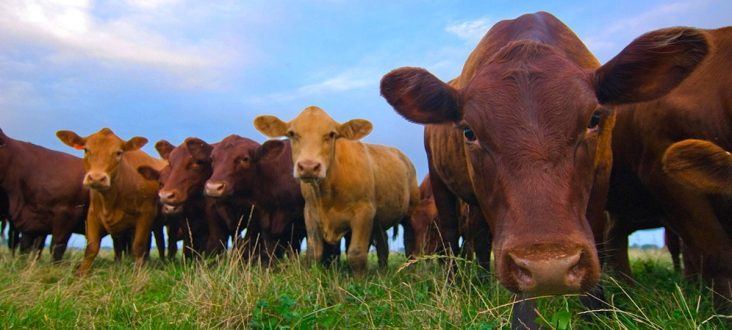State beef producers surveyed for the first time in more than a decade
by January 28, 2019 4:59 pm 541 views

The first industrywide assessment survey of Arkansas beef producers in more than a decade discovered producers are concerned with who will follow in their footsteps, how their operations may be able to expand, and the cost of equipment, land and a high-quality herd bull.
The 2018 Arkansas Beef Industry Assessment, developed and administered by the University of Arkansas System Division of Agriculture and the Arkansas Beef Council, included responses from more than 330 cattle producers in six industry sectors.
Beef is the fifth largest agriculture producing sector in Arkansas, with an estimated $750 million impact to the economy, according to the Arkansas Farm Bureau. There are about 1 million beef cows in the state, according to the United States Agriculture Department.
Shane Gadberry, professor of ruminant nutrition for the Division of Agriculture, said the survey was initially developed at a November 2017 summit, where industry leaders and university facilitators identified strengths, limitations, opportunities and threats to beef production in the state. The survey was also based in part on a similar assessment administered in 2005.
The six industry sectors represented at both the summit and in the survey responses included producers involved in both small and large commercial cow-calf operations, purebred and stocker cattle operations, allied support industries and educators.
Gadberry said many of the participants voiced concern over the long-term sustainability of the Arkansas beef industry. The average age of Arkansas cattlemen continues to rise, as fewer young people pursue careers in ranching. More than 60% of respondents to the assessment survey reported being 50 years old or older; more than 47% reported being older than 60, according to the survey. In 2005, only about 35% of survey respondents reported being older than 60.
“Pretty much every industry segment we surveyed, someone was looking at that next generation of producer,” Gadberry said. “Who’s going to continue supporting the beef industry in the future? Some are concerned about young people returning to the farm — some identify it as a threat to the industry. Others identify it as an opportunity to do a better job of marketing the ranching lifestyle to others, and help grow the industry that way.”
Cattle producers in Arkansas, actual and potential, are often faced with land prices as high as $2,000 an acre, Gadberry said. Supporting a single cow requires three to four acres of grazing or haying pasture. It can be difficult to expand existing ranch acreage contiguously.
“The chance to purchase a 120-acre tract of land can be difficult,” Gadberry said. “Today, it’s not uncommon for a producer who’s really expanding his cow herd to be operating in multiple counties. They’re not just buying adjacent properties to what they already own.”
Among the industry’s strengths in Arkansas, producers identified support from the Cooperative Extension Service, high water quality and the availability of quality genetics.
“There’s a lot of discussion about improving the quality of the cattle in the state, improving genetics, etc.,” he said. “There’s actually less emphasis on that in the 2018 assessment, however, compared to 2005. Today, the emphasis is on the idea of marketing. Our producers see opportunity in growing demand including international markets. They also recognized opportunities such as improving marketability locally through value-added practices, such as preconditioning.”
Gadberry noted that in the broader beef industry, there tends to be a stigma against beef produced in the South and southeastern states, which Arkansas producers have long worked to overcome.
“We know the calves that leave Arkansas for feedlots outside the state aren’t valued as high as those coming from other areas,” he said. “We’ve made a lot of progress in beef carcass quality characteristics. The assessment indicates there’s opportunity to address herd health management and reduce risk of calves getting sick after leaving the farm.”
